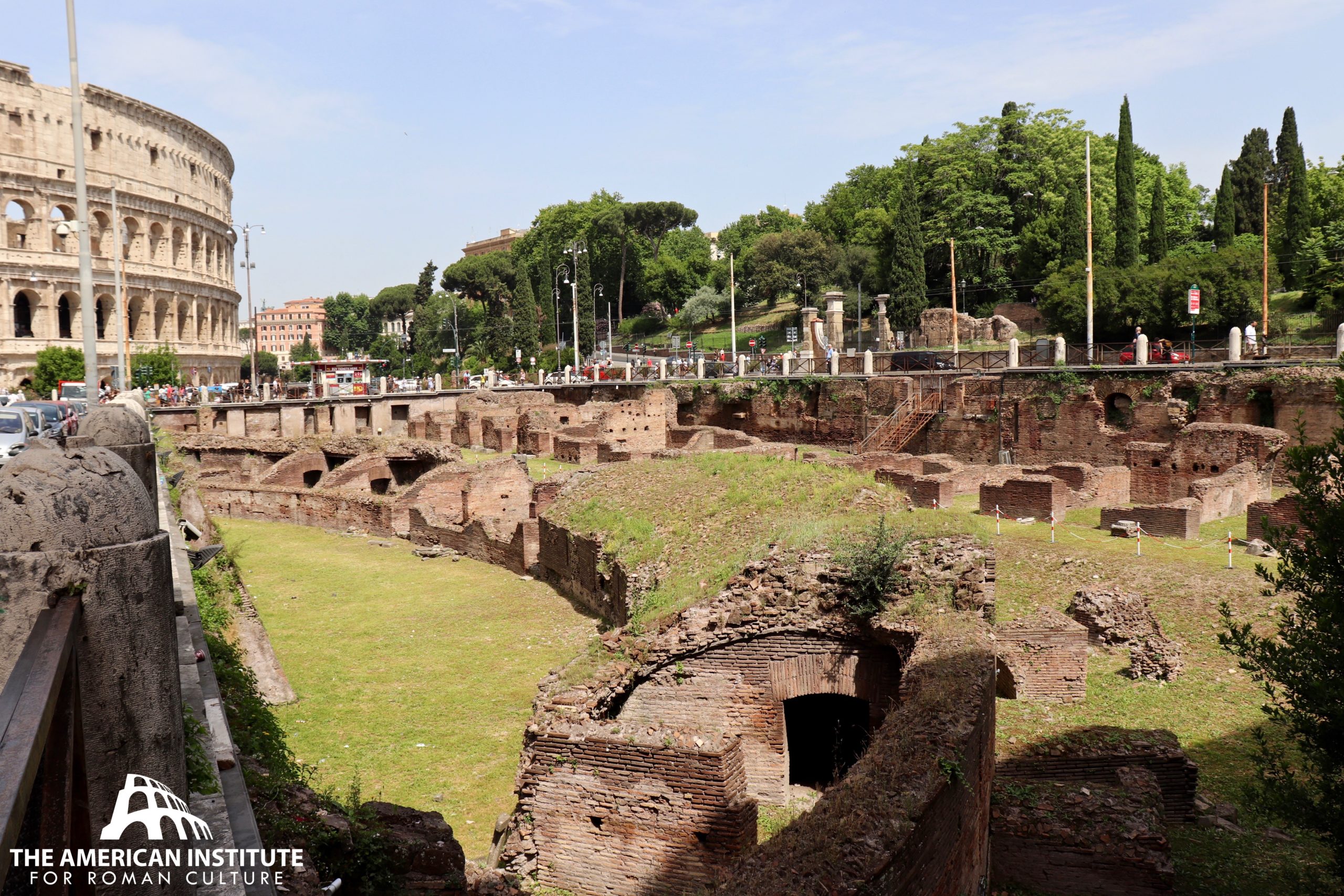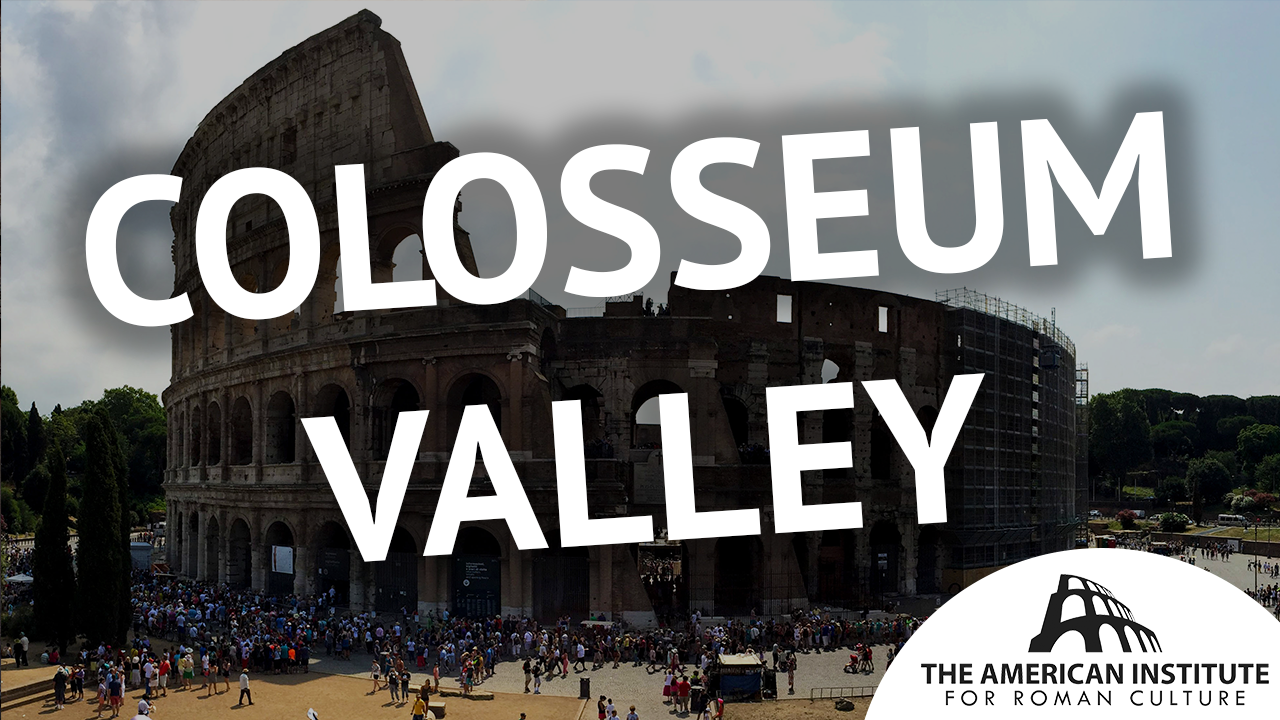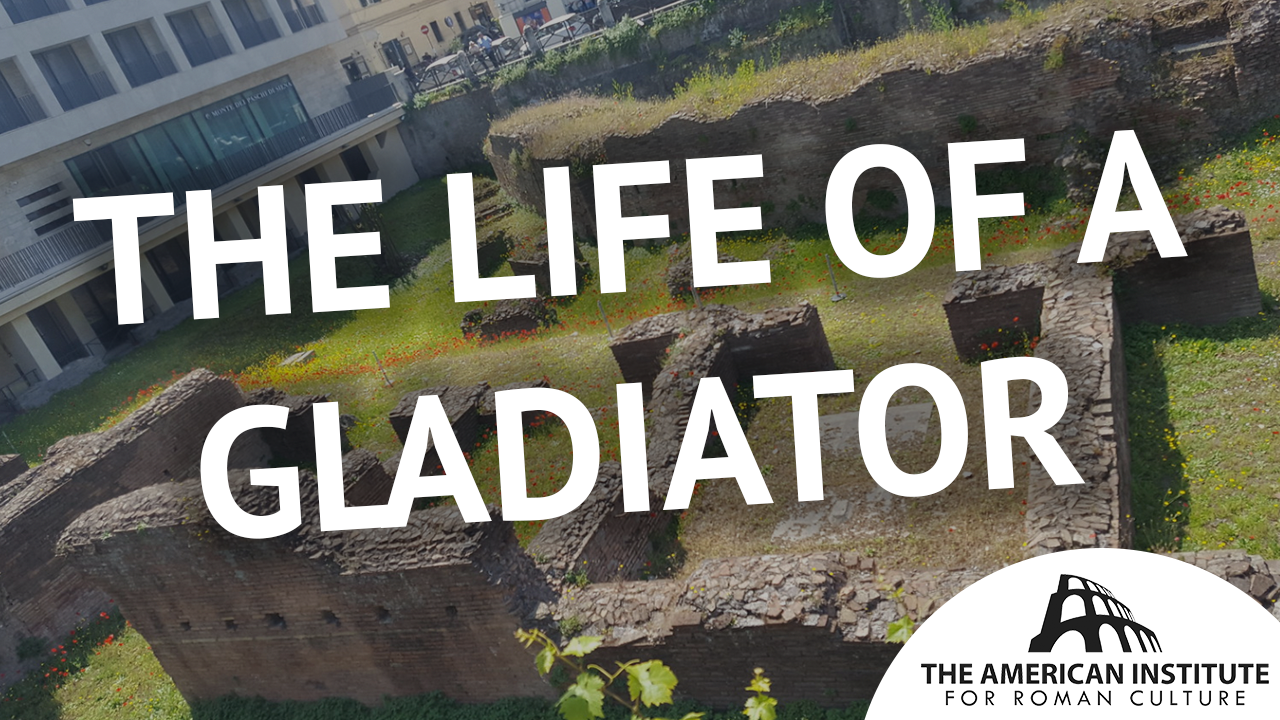The Ludus Magnus, or “Great Training Ground,” was the largest and most important gladiatorial school in ancient Rome. It stood just east of the Colosseum, between the Via Labicana and the Via di San Giovanni in Laterano, and was directly connected to the amphitheater by an underground passage. Built between 81 and 96 CE during the reign of Emperor Domitian, the complex served as the main training center for the gladiators who fought in the nearby Flavian Amphitheatre.
The Ludus Magnus was designed as a large rectangular building, at least two stories high, organized around a central porticoed courtyard. At its center was a small training arena, a miniature version of the Colosseum, surrounded by tiered seating for about 3,000 spectators, including a special box for distinguished guests. Romans often came to watch the gladiators practice, treating these sessions as public entertainment. Around the arena were porticoes lined with cells, which served as living quarters for the fighters. Archaeologists estimate there were about 130 cells in total, with fourteen on the northern side still visible today. The historian Herodian even recorded that Emperor Commodus occasionally slept in one of these cells before entering the arena himself.
At each corner of the courtyard stood small triangular fountains, one of which has been reconstructed at the northwest corner of the site. Domitian’s choice of location reflected careful planning: the school’s proximity to the Colosseum made it easy to transfer gladiators through the underground tunnel, and its placement also connected it to other Flavian monuments, such as the Baths of Titus and nearby service buildings that supported the games.
The Ludus Magnus was originally faced with marble, much of which was later stripped away. After the ban on gladiatorial games in the fifth century, the complex fell into ruin, and a small cemetery was later established on the site. The ruins were first uncovered in 1937, though full excavations were not completed until the 1950s. The remains visible today belong to a later phase of construction, likely carried out under Emperor Trajan, who raised the floor level by about 5 feet (1.5 meters).
With its grand scale, innovative design, and direct link to the Colosseum, the Ludus Magnus became the model for gladiatorial schools across the empire and a lasting symbol of Rome’s fascination with public spectacle.
Bibliography:
- Grout, James. “The Roman Gladiator.” University of Chicago. https://penelope.uchicago.edu/encyclopaedia_romana/gladiators/gladiators.html
- “The Ludus Magnus.” Turismo Roma. https://www.turismoroma.it/en/places/ludus-magnus
- Platner, Samuel. (1929). “Ludi.” In A Topographical Dictionary of Ancient Rome (p.319-320). Retrieved from: https://penelope.uchicago.edu/Thayer/E/Gazetteer/Places/Europe/Italy/Lazio/Roma/Rome/_Texts/PLATOP*/ludi.html
- “Rome, Ludus Magnus.” Livius. https://www.livius.org/articles/place/rome/rome-photos/rome-ludus-magnus/
For Further Reading:
- Lidz, Franz. (2016) “The Discovery of a Roman Gladiator School Brings the Famed Fighters Back to Life.” Smithsonian Magazine. https://www.smithsonianmag.com/history/discovery-roman-gladiator-school-brings-famed-fighters-to-life-180959489/
LUDUS MAGNUS, to judge from its name, the principal training school for gladiators in Rome. It was in Region III (Not. Cur.), and is represented on a fragment (4) of the Marble Plan as a rectangular court, about 60 by 90 metres in size, surrounded with small chambers and containing an elliptical enclosure. Other references (Herod. i. 15. 8, 16. 3; CIL vi. 1645, 1647 (=x. 1710), 7659, 10164-10170) give no information as to its location, but it was probably one of the four established by Domitian (Chron. 146) near the Colosseum, perhaps at the beginning of the via Labicana (HJ 298-299) or just east of S. Clemente (Atti del Congresso Storico 1907, i. 115).
This content is brought to you by The American Institute for Roman Culture, a 501(C)3 US Non-Profit Organization.
Please support our mission to aid learning and understanding of ancient Rome through free-to-access content by donating today.
Cite This Page
Cite this page as: Darius Arya, The American Institute for Roman Culture, “Ludus Magnus,” Ancient Rome Live. Last modified 10/26/2025. https://ancientromelive.org/ludus-magnus
License
Created by The American Institute of Roman Culture, published on 10/26/2025 under the following license: Creative Commons: Attribution-NonCommercial-ShareAlike. This license lets others remix, tweak, and build upon this content non-commercially, as long as they credit the author and license their new creations under the identical terms. Please note that content linked from this page may have different licensing terms.






